Check out other features and artist interviews here.
Related Tags
The Industry Interview: Orange Amps founder and CEO Cliff Cooper
From making waves in Swinging London to heading up a world-leading amplifier brand and winning awards along the way, Cliff Cooper looks back on more than 50 years in the business.
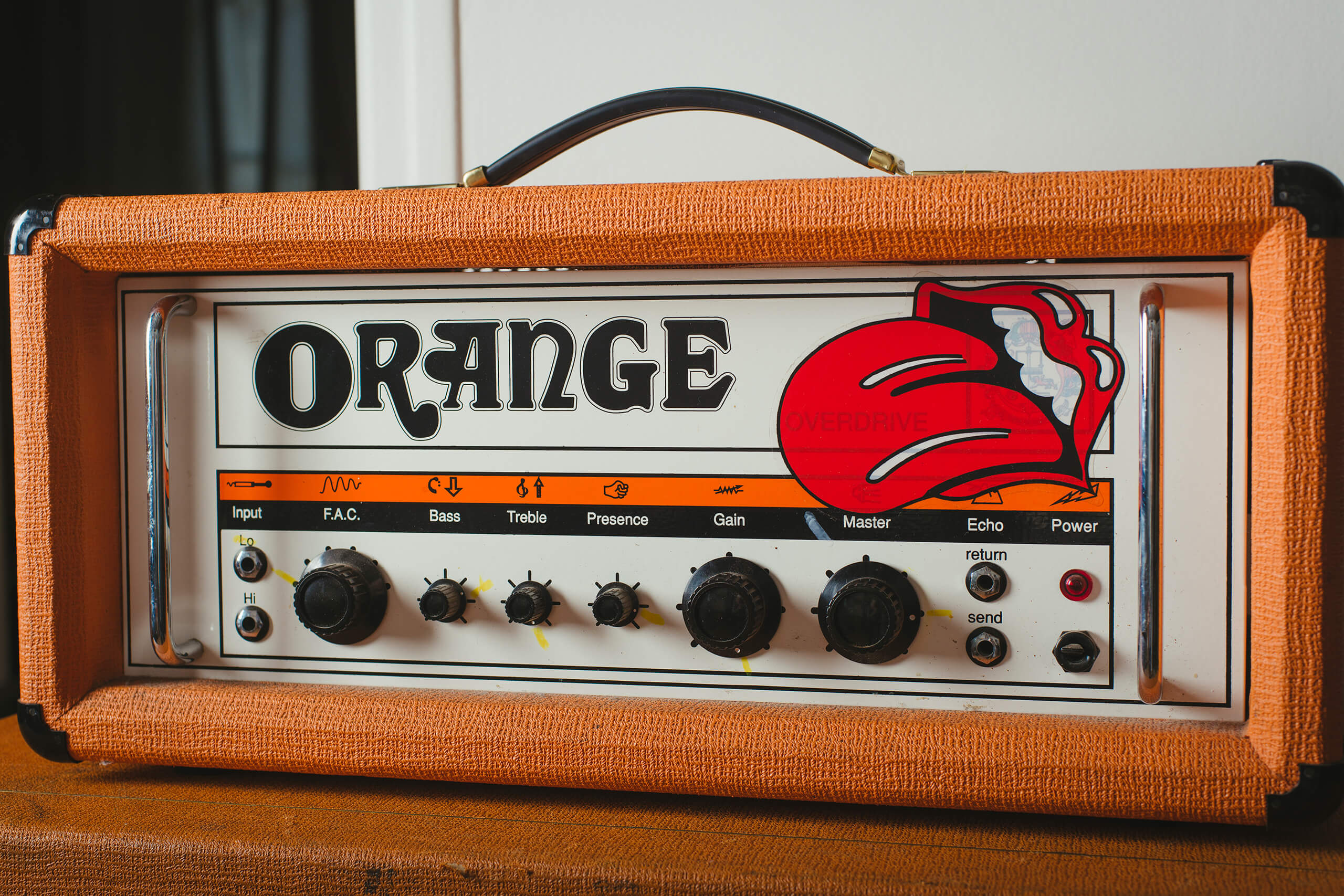
Image: Eleanor Jane
If ever a single colour epitomised an era of recent history, it’s surely the sudden explosion of orange that took place as the hippy era gave way to the 1970s. Suddenly, and for no obvious reason, orange was everywhere. Orange Minis meandered around city streets, people painted their walls with orange paint (no doubt splashing it all over their loon pants) and in 1968 a young bass player called Cliff Cooper, then earning his living as a TV repairman, opened a music shop in New Compton St, in a semi-derelict building in London’s West End. What did he call it? Orange.
It was the foundation of a music empire that doesn’t just include the Orange amplifiers instantly recognisable to every guitarist. The music shop was swiftly followed by Orange amps, an Orange recording studio, Orange artist management and an agency, an Orange record label and seemingly endless, restless activity which sees Cliff Cooper today, over seventy, but still very much involved in everything from running his amplifier business, to working with various business interests and charities, and even inventing an optical product which he’s currently licensing to a major US pharmaceutical company. In between have been clever property deals, audacious purchases and sales of brand names and all manner of business adventures which make Cliff Cooper one of the most successful figures in UK music.
If that sounds like the portrait sketch of someone who might have notched-up a few enemies along the way, the exact opposite is the case. Cooper is one of the most respected and liked figures in the industry, which is quite an achievement in a wicked world. As it’s the Orange Music Electronic Company that most interests us, we shan’t dwell on Cliff Cooper’s other businesses, though the Orange shop certainly demands attention.
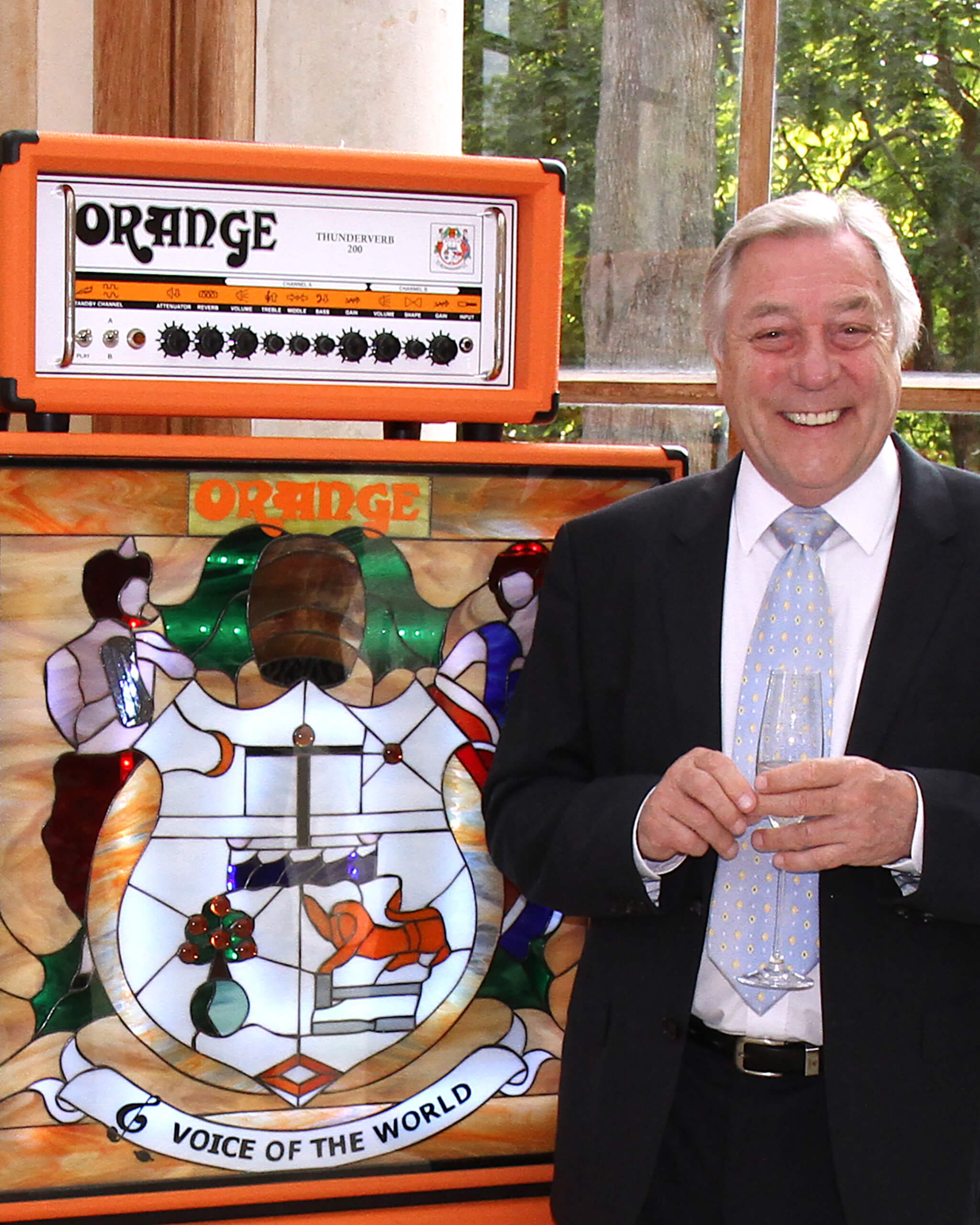
Counter culture
Cooper took over a rundown building owned by the council, knowing it had only a few years to go before it was redeveloped. He says he didn’t realise at the time that it was situated in the middle of a walk-around route that most London musicians of the era would have known. Orange had landed right in the heart of an often still stuffy and uptight West End music shop scene. Cooper was young and hip, so was his store, so were the people who worked for him and so were his customers, who soon included both the big names of the time and also up-and-coming London faces including the likes of Peter Green and Paul Kossoff.
How dare this upstart kid muscle-in on the settled world of music shops, whose salesmen and owners still often regarded rock music as kids’ stuff – soon, no doubt, destined to disappear like previous fads such as rock ’n’ roll and skiffle. Not appreciating Cooper’s countercultural image and his disturbance of their business, they retaliated by refusing to sell him guitars and amplifiers. When he responded by making his own amps, they refused to allow his company into the Music Association, which meant he couldn’t take part in the annual British Music Fair nor get government financial aid to show at the expensive annual Frankfurt Musikmesse, then an essential tool for any manufacturer hoping to export. Cooper was quick to point out that it was an early Music Association and a different era to the MIA who, he says, are “Brilliant and do a great job for the music industry”.
“I was young and had long hair when all the other shops had suited and often elderly salesmen”
And the guitars? When he grasped the opportunity to buy and sell vintage US-made guitars (something almost unheard of in the UK at the time) some of his rivals ‘encouraged’ a raid by HM Customs and Excise, who seized Orange’s entire US-made guitar stock. ‘The Revenue’ suggested that import duty might not have been paid on these guitars when distributors or individuals bought them into the UK, and the onus was on Cooper to prove otherwise. When he approached the official importers of the major guitar brands, asking if they would help him by comparing the serial numbers of the impounded guitars with their records of the ones they had imported, they simply refused to answer his request.
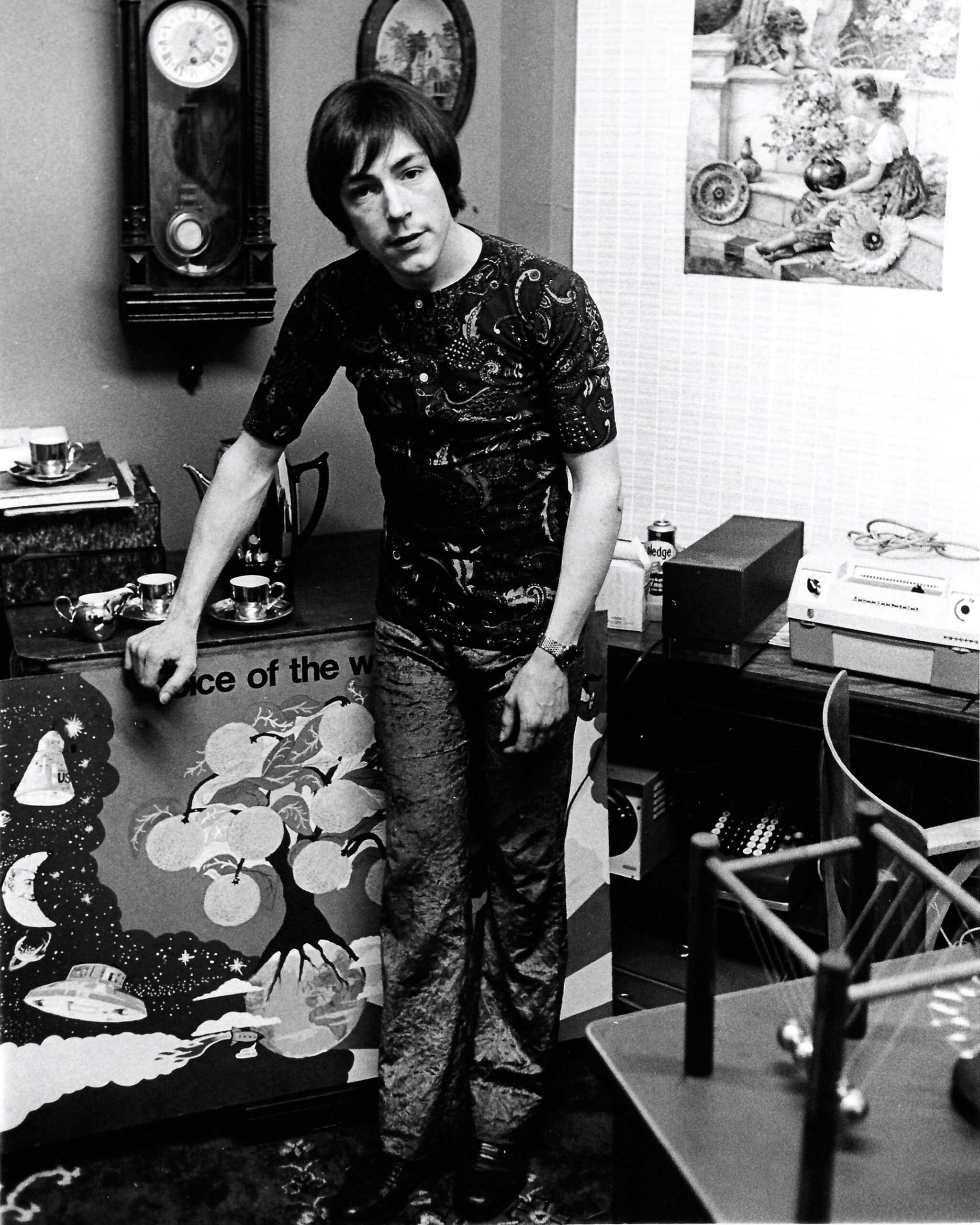
Cooper tells the tale without a trace of bitterness. He even knows which individual organised the stunt and says he bears him no ill will. All the same, these were hard times for the young entrepreneur: “When I took that shop, I didn’t realise the position it was in” he says. “It turned out that it was on the walkway from Tottenham Court Road, along Charing Cross Road, round the corner to Shaftesbury Avenue – that was the route that all the musicians used to visit all the shops and we were on that walk.
“I was young, had long hair where all the other shops had suited and often elderly salesmen. It wasn’t about money – we even offered to pay up front – they simply wouldn’t supply us, the same as they wouldn’t let me in the Music Association and their own show at the Russell Hotel.”
Cooper recalls that, in the beginning, he was living in the back of the shop and having to use the nearby public baths because he had no proper washing facilities. Sometimes he even cleaned cars at night so that he had the money to pay his staff. But the ability to turn disadvantage into opportunity is one of the key qualities a successful businessman needs and Cliff Cooper has it in spades. When the big-name amp makers of the day refused to supply him, he simply started his own brand and it was, almost instantly, a raging success, though he is typically modest about that initial take-off.
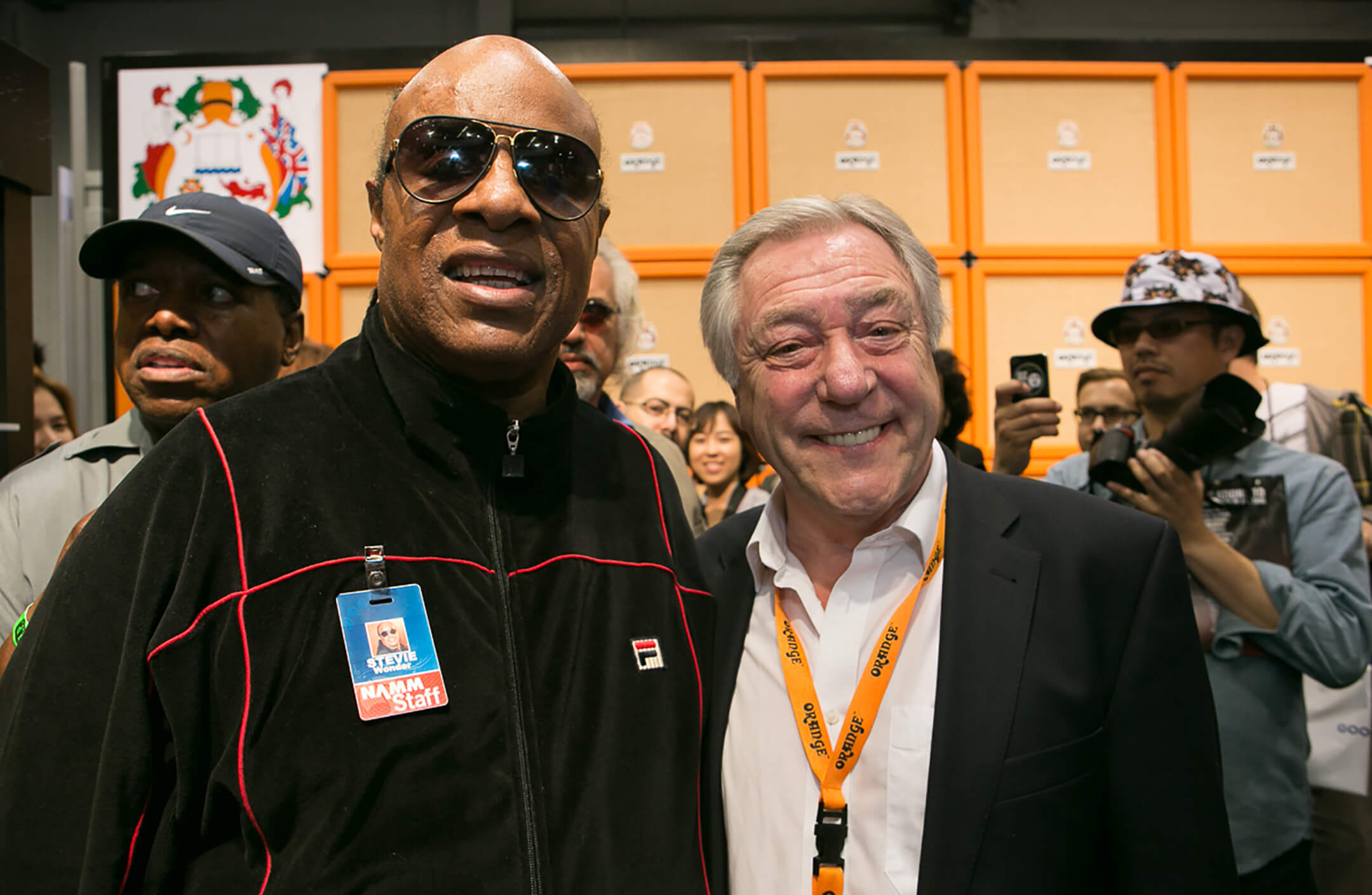
“Luck sometimes comes into things and we were lucky,” he says. “The first band to use Orange was Fleetwood Mac and soon after, Stevie Wonder recorded Superstition with an Orange amp. Had that not happened, I don’t know how we would have fared because they were difficult times. In those days everything was a fight, nothing was easy. Banks didn’t want to do business with young people and I was really green – I really didn’t have any experience. Many times I was nearly bankrupt, there were even demands for protection money because we were near Soho, and I wouldn’t pay it. Everything was a struggle but it made me a bit tougher, I suppose.”
One piece of good fortune included being able to buy Led Zeppelin manager Peter Grant’s office desk – a gigantic affair (much like Grant himself) which was Cliff’s pride and joy for some years. “I used to sit there and feel lost behind it,” he laughs.
Vox pops
As a young player, Cooper, like many British musicians of his generation, was a Vox user and its founder Tom Jennings is someone for whom he had a lot of respect. Indeed, he had approached Jennings to ask if he would consider building Cooper’s first product, a tiny practice amp with an earpiece he had developed in the mid-60s.
“I felt sorry for Tom Jennings. He had a very good business with Vox, but he ran into huge trouble with his Guitar Organ. In fact, when they went into liquidation, they were going to throw the Guitar Organs away and I bought 150 or maybe even more from the company’s liquidator. The story was that they invested a lot of money into that product but when they had shipped the guitars to Thomas Organ, who were distributing them in the States, it was found that they went out of tune while they were being played, so Thomas sent them all back.
“But we found out what the problem actually was and it was quite simple. When people played the guitar in a club and it got very warm, the resistors in the neck changed value – only slightly, but enough to make the guitar go out of tune. We replaced the resistors with high-stability types and that solved the problem of the Guitar Organ. We sold all of them!”
The Matamp connection
Not being able to sell other people’s amps and deciding he must create his own range, Cooper turned to Mat Mathias, a Yorkshire-based German refugee who has become something of a legend over the years, not least because of having his name on the first Orange Matamps.
Mathias was a well-respected amp maker, running a small business operating from the back of a tobacconist’s shop in Yorkshire. Cooper had heard of his reputation and approached him to build amplifiers for Orange, which just happened to have taken on an urgent order for the newly formed Fleetwood Mac. Mathias obliged and as a courtesy, Cooper agreed for the amps to be branded as Orange Matamps. With Fleetwood Mac soon followed by many others and with the Orange brand obviously taking off, it was clear that Mathias wouldn’t be able to keep up with demand, so Cooper invested in a new factory in 1970 and Mathias continued with the Matamp brand.
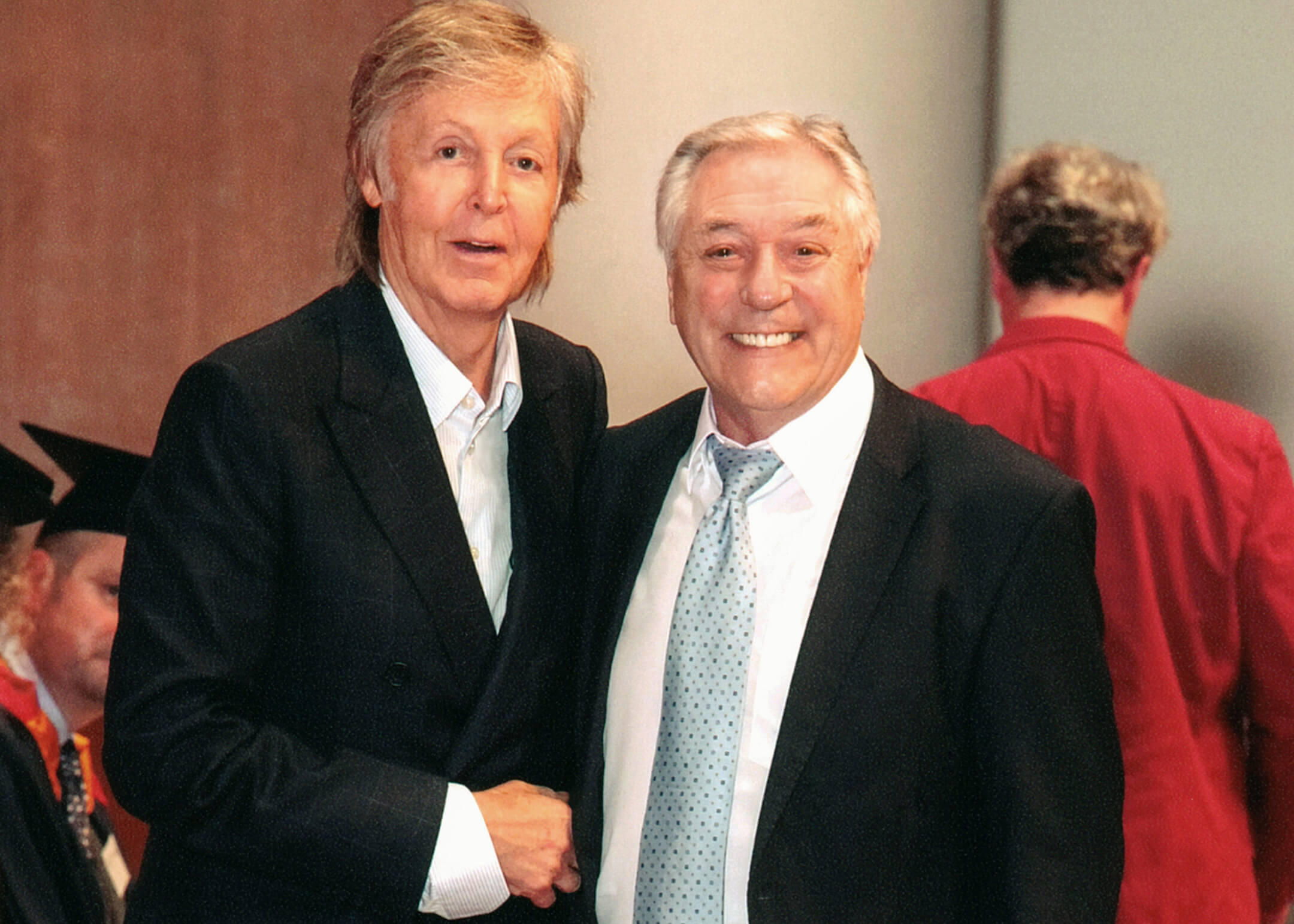
However good they may have been, however, those first Orange amps weren’t quite what you would expect of a screaming valve guitar amp from that era. As Cooper says, they were cleaner than most of the competition (probably due to Mathias’s background with hifi amplification) and the Orange sound that was to propel the company to real stardom came a little later with 1971’s Graphic head.
“When we made our first amplifiers, we measured the output and it gave out 120 watts, so that’s how we described them. But when we measured them against a Marshall amp we had, it only put out something like 93 watts but it sounded much louder. I looked into this and even consulted a hearing specialist who explained that the ear registers distortion as pain, and it was the distortion that was making the Marshall amp sound louder. That’s not to knock Marshall, of course – it is a great amplifier and a world leader – but it was lucky that people wanted things phenomenally loud at the time and also wanted the distortion that had come about because of the transformers they were using.”
Special sauce
This is an often overlooked truth about valve guitar amplifiers. Marshall’s early sound was attributed to the circuitry and their transformers. Other guitar amps of the time, such as Impact, Sound City, Hiwatt and, of course, Orange, sounded different – in part because of their choice of transformers. This is so important to Orange that to this day the company employs an expert to research transformer technology.
“Valve amplifiers are almost the same as they were 80 years ago. The secret to the sound is really the output transformer”
“There really is only so much that you can do with a valve,” Cooper says. “Valve amplifiers are almost the same as they were 80 years ago and really you’re not left with a lot you can do now with the valves to make them sound more appealing and satisfying. The secret to the sound is really the output transformer.
“With an output transformer, a problem can occur in the secondary winding with transients. These are high frequency pulses that you can’t hear, jumping back into the primary winding and which are usually out of phase, which in turn cancels some of the sound and makes it a little flat. To stop those rogue transients you need extra windings and to use good metal laminations, and there’s a lot in that – the permeability of the metal used makes a great difference to the sound.
“I can remember when we first switched to a really sophisticated transformer, probably in about 1998 when we’d taken Adrian Emsley [Orange’s highly respected technical director] onboard. He spent many hours researching the permeability of metal for transformers and eventually he found one that was better than all the others and once he had that, he could work to improve it, which is what he did. Instead of having, for example, three windings, he used five and then eight and that made a big difference to the sound. But it’s expensive and there are no shortcuts.
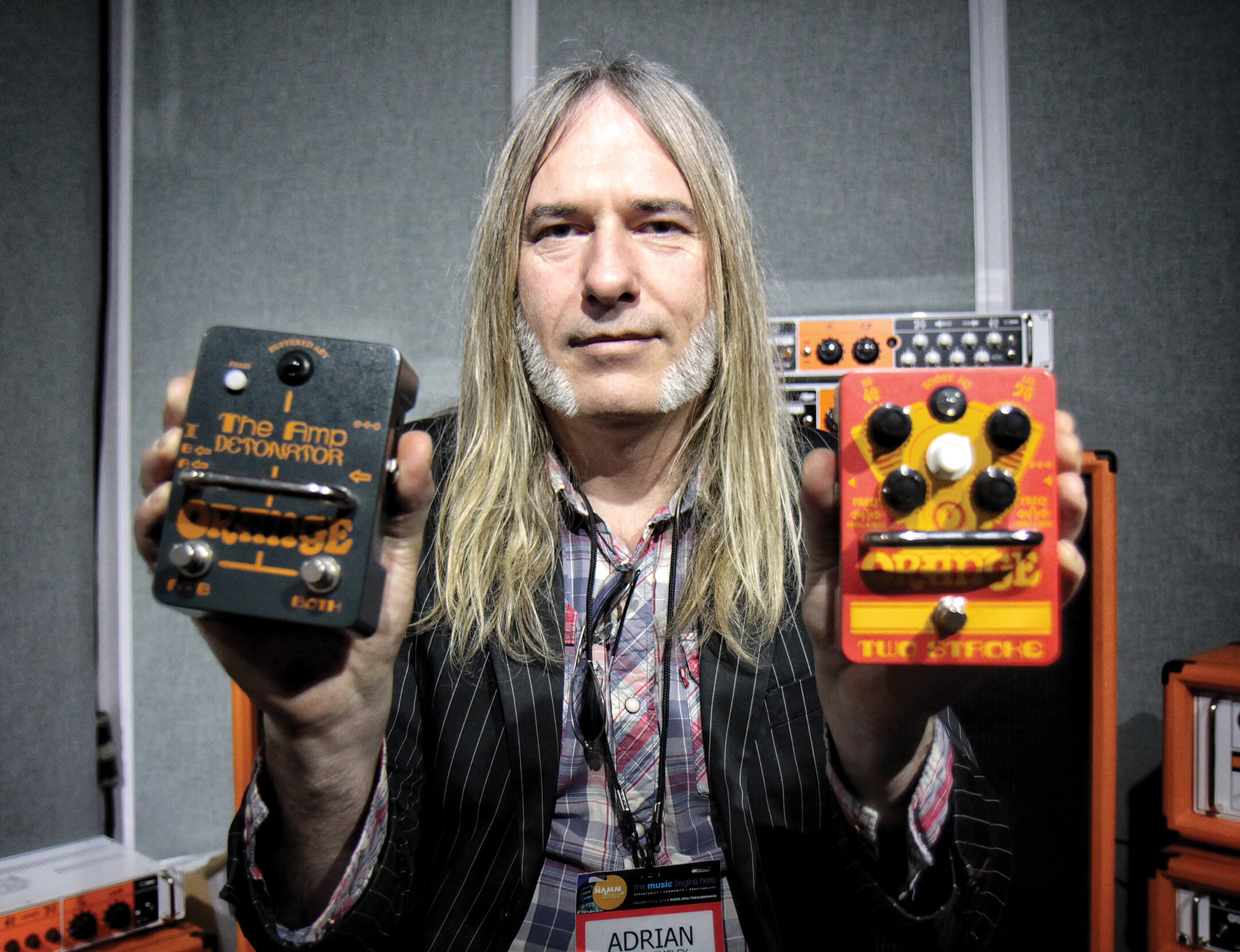
“Also another factor is that cheaper materials can get hot, the copper used in the windings expands and that changes the sound. In fact Adrian has even experimented by going right back to the early days with Partridge transformers, where they used brown paper to laminate the windings – but of course it wouldn’t pass the safety requirements these days!”
So deep has Orange’s research gone into what makes a valve work and how to keep it working correctly that the company’s VT1000 Valve Tester has become a more or less standard piece of equipment with touring bands’ technical crews. Now, Cooper reveals, the company is shortly to launch a new model that promises to become equally indispensable.
“Our current one doesn’t show microphony – you have to tap the valve to test that – but our new valve-tester is unbelievably clever because it will test for that and show the results digitally, so it doesn’t need a loudspeaker to test it. We’re going to try to have it ready for NAMM. I think it will become very popular.”
Changing times
It wouldn’t be accurate to portray Orange as blessed with nothing but success along the way. In the mid-70s the company ran into very heavy weather indeed. In 1975 it launched the Jimmy Bean range of denim-covered solid-state amps, which, for all their designer looks, didn’t sound too wonderful and failed to sell in any quantity. Then, in the same year, Cooper tried to blaze a trail with Omec, the world’s first digitally programmable amplifier. It was really a digitally controlled analogue amp and undoubtedly clever, but way ahead of its time.
It failed to make the impression Cooper had been hoping for and when in 1979 two overseas distributors went into liquidation owing the company a lot of money, he took the decision to effectively mothball the business. The Orange shop had closed in 1978 and for a period, while you could still buy an Orange amp, it would be more or less handmade to order. Cooper was, naturally, as busy as ever with his extensive business interests, but for that period, at least, the Orange story fell quiet.
“We ask guitarists whose opinions we rely on to do blindfold tests. So far, unanimously, they go for analogue”
Then, unexpectedly, in 1993 Cooper licensed the Orange brand to Gibson, which, looking to maintain the amp brand’s ‘made in England’ status, arranged to have them produced by Matamp in Huddersfield, Yorkshire, which had, following Mat Mathias’s death in 1989, been taken over by former DJ Jeff Lewis. Lewis’ company produced Orange amps for Gibson until 1997 when Gibson’s controversial CEO, Henry Juszkiewicz, handed the name back to Cliff Cooper, who reveals, incidentally, that Henry’s initial interest in the brand had been sparked because both he and Dave Berryman (Juszkiewicz’s business partner and then head of Epiphone) had played in a student band using Orange amps.
Cooper also mentions that, around that time, he happened to purchase the Trace Elliot brand via a closed-tender auction when it went into liquidation, and promptly made a good margin by selling it on to Peavey.
Back with Orange under his control once more, Cooper then had another of those strokes of luck which he says he has enjoyed from time to time. On this occasion, it was the enthusiastic adoption of Orange amps by Oasis star Noel Gallagher, whose suggestions for tweaking Orange’s Overdrive circuit in the late 1990s saw the company’s products once more being used onstage by one of the world’s hottest bands.
Since then Orange hasn’t put a foot wrong. Unlike many of its competitors, it has refused to have amps OEM-produced. Instead it has built its own factories in China and thus controls quality. Orange’s small amps, such as the hugely successful Tiny Terror launched in 2006 and the Crush series, have seen the brand go from strength to strength but – and this is perhaps a key to Orange’s enduring reputation – never really by looking over its shoulder. While the Gibson era saw attempts to revive Orange’s past products, Cooper and Emsley have resisted the temptation, apart from the occasional tip of the hat, such as the 40th Anniversary series from 2008. So where do they go now? Do they have digital modelling up their sleeves? No, Cooper says, quite firmly.
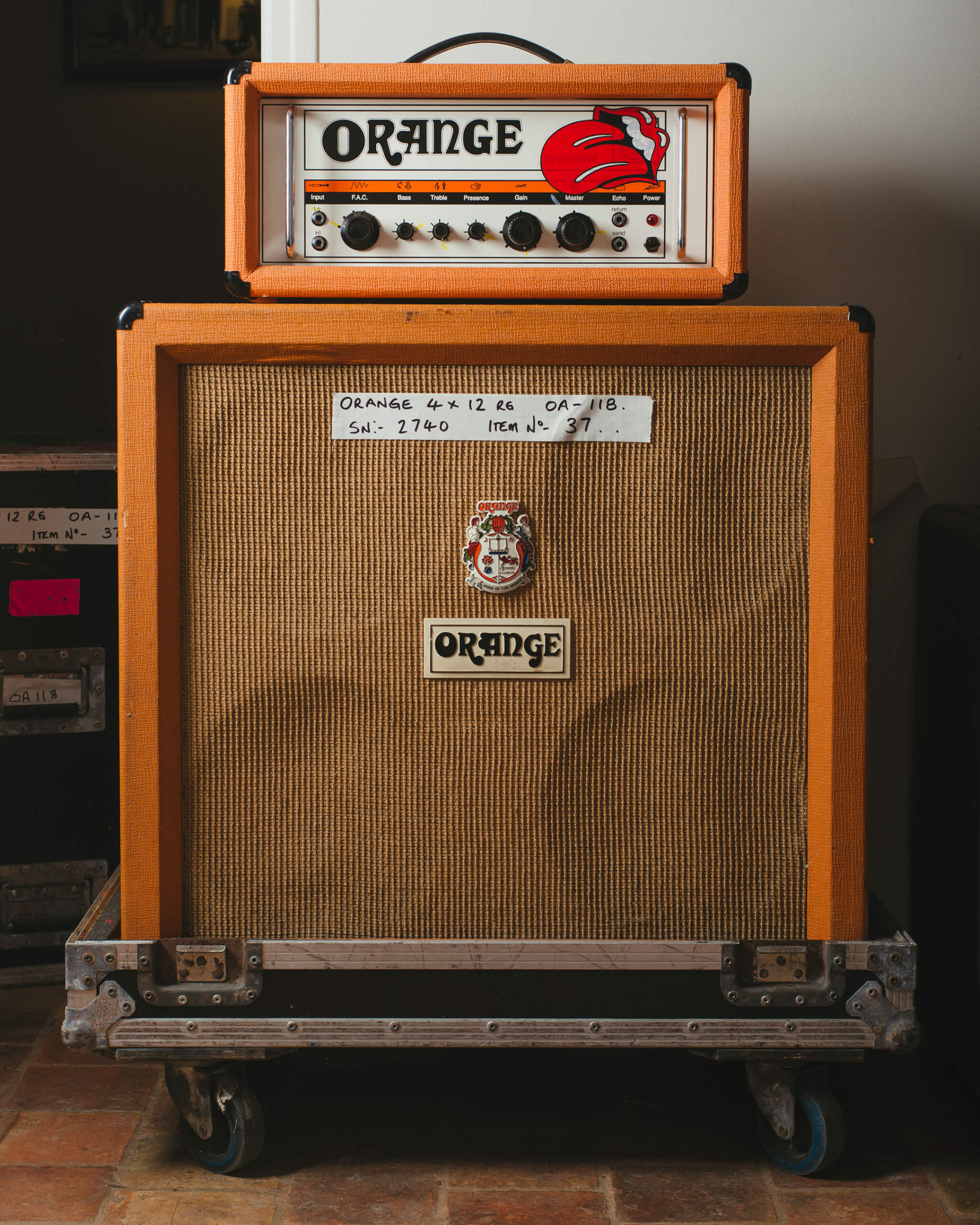
“It just doesn’t sound right,” he says. “The only thing I can do is compare them to an analogue amplifier and they just don’t compare for me. Something is lost in the analogue to digital conversion and then it has to be modified back to sound like the original – it’s a compromise. And when they do get it right it will still be a compromise because you can’t make it sound the same. Obviously, as manufactures do, we buy all our competitors’ products to compare them and we ask guitarists we know and whose opinions we rely on to do blindfold tests. So far, unanimously, they go for analogue. If you’re not too fussed it’s okay, but if you get serious then you can tell.”
Cliff Cooper’s succession has been provided for by his son Charlie having joined the business in a key role, and with Adrian Emsley still busily working away probing the remaining mysteries of the valve amp, Orange’s future seems a lot more stable than some brands in the MI industry just now. Will Cliff still be giving interviews about Orange in 10 years time? We wouldn’t bet against it.
